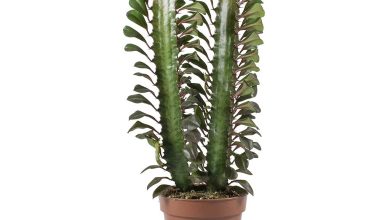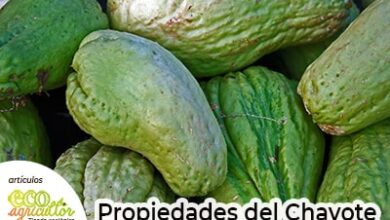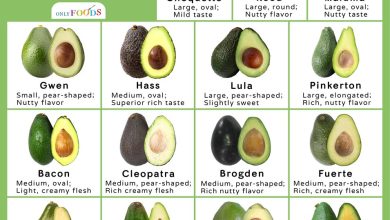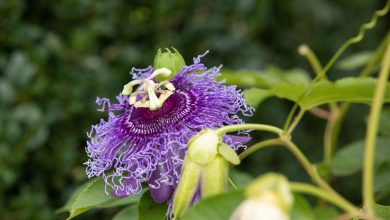How to Plant Cucumbers: [Cultivation, Substrate, Irrigation and Care]
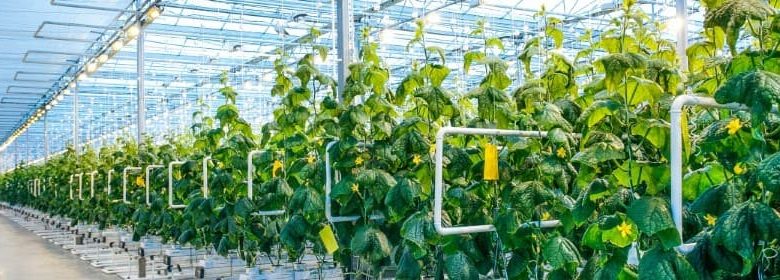
Did you know that cucumber can erase crayon and graphite stains?
Or what… thanks to the chemicals it contains, cucumber can be used to give shoes a quick and lasting shine, and it also repels water?
Wow, an interesting vegetable. Also,easy to grow.If you are just starting out with this garden, planting cucumbers can be a very good choice.
Cucumber plants can be considered fast growing !
I won’t cheat on you.They require a series of conditionsso that they grow healthy and strong.
How to Plant Cucumbers Step by Step:
- When? Between April and June.
- Where? Place of maximum sun exposure. Ideally 10 hours a day.
- Harvest time? 60 days from sowing.
- How do we prepare the land? Loose and weedless. Ideal to pass motoazada or motocultor.

- How do we pay? Worm humus andwell decomposed animal manure.
- How do we water? Ideal, with drip.
- How often do we water? In summer very often. Every two days, about 30-40 minutes.
- How do we sow? But step by step here.
- When do we harvest? Sliced cucumbers should be between 15 and 20 centimeters in length, while small varieties such as gherkins should be harvested when they reach 5 centimeters.
- Favorable associations? Onions, peas, spinach, lettuce, Swiss chard, beets, beans, and sunflower. Also garlic, basil, lentils, celery, oregano, cabbage, turnip, nasturtium and radish.
- Unfavorable associations? Potatoes , tomatoes, eggplants and plants of the same family.
- Plagues and diseases? The aphid, red spider, whitefly and powdery mildew.
 The organic family garden (CROPS)
The organic family garden (CROPS)
- Well, Mariano (Author)
€9.49 View on Amazon Prices with VAT without transport
Last updated on 2022-07-31 / Affiliate Links / Affiliate API Images
 Cucumber, Cucumis sativus, is the fruit of a fruiting vegetable of the same name, belonging to the Cucurbitaceae family, as are watermelon, melon, and courgette.
Cucumber, Cucumis sativus, is the fruit of a fruiting vegetable of the same name, belonging to the Cucurbitaceae family, as are watermelon, melon, and courgette.
It has a productivity25kg per square meter, which makes it the most abundant among the typical urban garden crops.
In addition, its cultivation is very important, as it has a high rate of consumption.
They are vegetables that require little care, so it is relatively simple grow cucumbers successfullyin your garden or orchard.
But fulfilling what they need and with some patience, a single cucumber plant is usually enough to cover the needs of a family.
The cucumber plant is atremendously effective producer!
Do you want to know what those necessary requirements are? Take a look at this guide and it will answer any questions
How do we grow cucumbers? The Method [11 Steps]
Clear the ground
 It removes weeds and remains of previous crops and all kinds of residues to ensure that the cucumbers receive the correct amount of nutrients.
It removes weeds and remains of previous crops and all kinds of residues to ensure that the cucumbers receive the correct amount of nutrients.
All plants must be pulled out by the roots to prevent them from growing back.
If you can, it is ideal that you use a power tiller or motorized cultivator and go over it several times.
Moisten the soil before planting the cucumbers.
This reduces the risk of expelling the seeds by the force of the water.
No products found.
Fertilize the soil.
Spread some granular fertilizer over the soil in your garden to improve the overall quality before you start to plant cucumbers.
If you use natural fertilizers, mix into the soil to a depth of 5 centimeters.
Put the seeds in the soil.
 Make sure they are kept to a maximum depth of 1 inch. Cover them lightly.
Make sure they are kept to a maximum depth of 1 inch. Cover them lightly.
If you plant cucumbers in soil, bury 2 or 3 seeds in each hole.
Each hole should be kept 40 to 90 centimeters apart. Keep in mind that bush varieties can be separated by less space than vining varieties.
If you sow in a seedbed or pot, place 2 or 3 seeds in the ground.
Select the seedlings.
The seeds will germinate in 5-8 days.
If more than one seed has germinated in each hole, keep the strongest one. To do this, do not pull the weak one, as you can damage the leaves. A simple pruning at ground level is sufficient.
Add compost when the seedlings sprout.
Covering the soil with compost will prevent weeds from growing around your plants that can steal nutrients. At the same time, the compost will help you maintain a good temperature for the cucumbers.
Transplant your shoots.
If you plant cucumbers in a pot or seedbed, you should transplant a month after planting. Choose a sunny and well-ventilated area in the garden. Leave between 40 and 90 centimeters between each of your plants.
Protect your plants.
Eighth: Use mesh to protect your plants from pests and possible predators, especially rabbits and squirrels. Protection is important mainly during the early stages.
You will need to remove the mesh once the plants have grown too large to remain inside it.
Fertilize regularly.
If you fertilized the soil before planting the cucumbers, you should do so again once runners appear on the vines and the plant begins to flower.
If you prefer organic fertilizers, use compost or decomposed manure.
If you haven’t used a granular fertilizer in your soil preparation, use a mild liquid fertilizer every two weeks.
CULIVERS Organic Worm Humus. Plant food. 100% Natural Organic Fertilizer. Soil Restorative (Tomatoes and Vegetables, 20 Kg)
- Worm humus of the highest quality 100% organic.
- Organic matter rich in microorganisms. (1 gram of humus contains about 2 billion microorganisms) The…
- Stimulator of the root development of plants and their absorption of nutrients. It has a neutral pH that makes it ideal for…
- Ecoforce worm humus increases the quality and production of crops. It has a low C/N ratio, allowing…
€19.90 View on Amazon Prices with VAT without transport
Last updated on 2022-07-31 / Affiliate Links / Affiliate API Images
If the leaves turn yellow, you need a high- nitrogen fertilizer. Remember that using the sowing of peas or beans beforehand considerably improves the level of nitrogen in the soil.
Remember not to use inorganic fertilizers on the leaves or directly on the fruits.
Nor should you fertilize your plants more than necessary. Doing so could stunt fruit growth and limit yields.
Prepare a fence or structure to support the plant.
Although the cucumber plant grows horizontally and can be left as a creeper, a guide is best. This is a necessary practice to keep the plant upright, favoring its ventilation and the use of light.
All this will affect the final production, fruit quality and disease control.
This is relatively easy, as most cucumber plants (especially vine varieties) will perch using their tendrils.
Blumfeldt Timberflor Plant Pot, Plant Pot, Easy to Place, No Drainage Hole, Fiberglass, Sturdy, for Indoors and Outdoors, Wood Look, 60 x 50 x 30 cm, Brown
- FOR INDOOR AND OUTDOOR: In the Blumfeldt Timberflor pot shrubs, perennials or flowers have a new…
- JAPANESE ZEN AESTHETICS: The Timberflor planter shows the best side of plants and combines it with an elegant design and…
- GOOD QUALITY MATERIAL: It does not matter if the pot remains indoors or outdoors. The new combination of…
- STABLE AND ROBUST: Despite being a much lighter pot than any other concrete or terracotta pot on the…
€109.99 View on Amazon Prices with VAT without transport
Last updated on 2022-07-31 / Affiliate Links / Affiliate API Images
You can use a cage trellis, stake, fence, or just about any other vertical structure.
 Guide the vines inside the trellis. As the plants grow, guide their position on the trellis by gently wrapping the vine tendrils along the trellis.
Guide the vines inside the trellis. As the plants grow, guide their position on the trellis by gently wrapping the vine tendrils along the trellis.
To give the plant more vigor you can fasten it with thread, cutting the main guide when you reach the end of the stake or the lateral shoots as soon as they have more than 4 leaves, although it is not an essential practice.
Prune your plants
 Throughout the life cycle of this vegetable we will remove the leaves in poor condition.
Throughout the life cycle of this vegetable we will remove the leaves in poor condition.
If we want to give greater vigor to the flowering and fruiting process, we can remove some secondary stems and leave the main one and two or three more, maintaining symmetry in the plant.
Remove old, yellow, or diseased leaves. When the humidity is too high, it will be necessary to put a little fungicidal paste on the cuts.
You should also clean the fruits in the first 8 leaves -approximately 70 centimeters-, so that the plant can develop a strong root system before going into production.
These fruits are removed as they are usually of low quality, since they touch the ground and also limit the production of the upper part of the plant.
Remove, in turn, all the curved and malformed fruits.
What do we need to grow cucumbers?
When? The date
- Sowing: between April and June.
- Harvest: between June and December.
If you live in very cold regions, ideally you should plant cucumbers at least two weeks after the last frost.
Where to plant cucumbers? temperature and light
The more light they receive, the greater the production of fruits, since good lighting makes it easier for plants to carry out the complete process of photosynthesis.
Sunlight is also important in regulating temperature.A very sunny placeensures that the soil remains at a good temperature. This allows the seeds to germinate more easily.
Waldbeck Power Planter Pot with 3-tier stake (75x130x35cm, intelligent irrigation system, planter for garden or balcony)
- The garden on the balcony: pot to grow your own vegetables or flowers on the balcony or terrace. Stable finish…
- 3-level stake for stable and straight growth of the plant. Learn from nature: ideal for learning to…
- Two irrigation openings at the bottom: no direct moisture on the plant. Water reserves at the bottom of the…
- It’s summer, it’s time for fresh vegetables! The Waldbeck Power Planter pot turns your balcony or terrace…
€69.99 View on Amazon Prices with VAT without transport
Last updated on 2022-07-31 / Affiliate Links / Affiliate API Images
Ideally, they should remain in the sun for between 10 and 12 hours.
Regarding temperature, cucumbers are very sensitive to low temperatures. During the most vulnerable stages the risk of death by frost is quite high.
The ideal temperature is between a constant 18 and 27 ºC.
Below 17 ºC, during the day, malformations appear in leaves and fruits. During the night, the minimum threshold is 12 ºC.
Above 30ºC, imbalances in plants and temperatures begin to appear.
In that sense, it requires more heat than melon, but less than zucchini.
Recommendations:
- Locate your cucumber plants in an area with good sun exposure.
- To increase the temperature indoors you can make use of vine- type covers with double coating.
- Outdoors , try to plant cucumbers in sunny places. You can also use thermal blankets if temperatures are very low.
Humidity and risks: How do we water?
Cucumbers require high humidity throughout their life cycle due to their large leaf surface.
The optimal relative humidity is between 60 and 70% during the day and between 70 and 90% at night.
Excess humidity can reduce production, in addition to causing fungi.
Recommendations:
- Preferablydo drip irrigationto regulate the flow of water. This also keeps the foliage dry and prevents the appearance of fungi.
- By moistening the soil before planting cucumbers, the risk of expelling the seeds due to the force of the water is reduced.

- The frequency of irrigation will depend on the particular conditions, however, you must always keep the soil moist, avoiding puddles.
- If you water with a hose, you must provide at least 3 centimeters of water with each watering.
- Maintaining optimum humidity is essential once the fruit begins to sprout.
- If you water in the morning, it is more likely that the crop will take longer to work, since the energy of the first hours is invested in evaporating the water from the surface of its leaves.
Substrate and nutrients: How do we prepare the soil?
The ideal soil should be loose, well drained and with sufficient organic matter.
 These types of floors heat up faster and maintain heat more easily.
These types of floors heat up faster and maintain heat more easily.
If the soil is too dense or too sandy, the root system is affected, causing the plant to die or not produce edible fruit.
The cucumber is tolerant to salinity, but if the salt concentration is very high, the plants find it very difficult to absorb the irrigation water.
This produces crooked fruit, weak stems, and rather slow growth. If, on the other hand, there is a low concentration of salts in the soil, the plants that are produced are more leafy but more sensitive to various diseases.
 PAPILLON Urban Garden 60x80x80cm, 8093100
PAPILLON Urban Garden 60x80x80cm, 8093100
- Urban garden
- Measurements: 60x80x80cm
- Made of treated wood
- 24 cm deep drawer and tnt fabric
€168.13 View on Amazon Prices with VAT without transport
Last updated on 2022-07-31 / Affiliate Links / Affiliate API Images
]The optimal pH ranges between 5.5 and 7.0
In terms of nutrients, the cucumber is quite demanding, so it is convenient to work the substrate well and add a good fertilizer. The best natural fertilizers are enriched compost or aged manures.
The most widely used fertilizers are simple fertilizers in solid form — calcium nitrate, potassium nitrate, ammonium nitrate, potassium sulfate, magnesium sulfate, etc. — and in liquid form — phosphoric acid and nitric acid.
If you use an inorganic fertilizer, choose a slow-release granular fertilizer and follow the label directions to determine how much to add to the soil.
Finally, it is important to remember that cucumbers withstand high temperatures well as long as there is adequate humidity, so before planting cucumbers, make sure that the soil where you will plant them drains easily.
Recommendations:
- If the soil is very clayey, add organic matter. You can use worm castings. In this way you will also be favoring the good drainage of th

